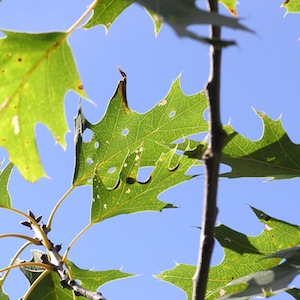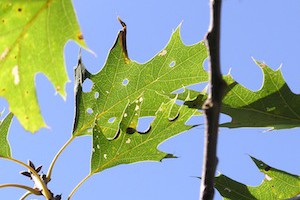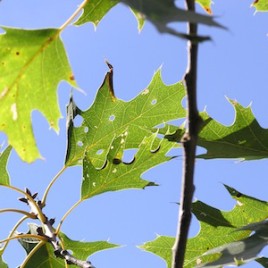
Woody plants like this red oak experience higher predation than non-woody plants, but on average only about 5.3 per cent of all plant leaves get eaten by herbivores, much lower than previously thought. (Photo credit: Marc T. J. Johnson)
A new analysis of over 1000 plant species shows that on average, only about 5.3 percent of their leaves are eaten by insects and vertebrate grazers – less than a third of previous estimates. This means that most of the energy captured by photosynthesis doesn’t go ‘up’ the food chain, but instead is passed on to decomposers in the soil. A better understanding of how energy flows in ecosystems could help scientists predict how they will react to changes, such as an altered climate, invasive species or logging.
Original research paper published in the the Proceedings of the Royal Society B on May 27, 2014.
Names and affiliations of selected authors


